Walking through the grand entrance of Udine Cathedral, I was immediately struck by its impressive presence in the heart of this charming Italian city. Located in the picturesque Piazza Duomo, this magnificent church stands as the city’s most important religious landmark, just steps away from Udine’s main streets.
The Museo d’Arte Sacra del Duomo houses an extraordinary collection of sacred art masterpieces dating back to the Middle Ages. It offers visitors a unique glimpse into the region’s rich spiritual heritage.
What makes this cathedral truly special is the story it tells through its art and architecture. The museum is dedicated to the Blessed Patriarch Bertrand of Saint Geniès who ruled Friuli in the 14th century.
As I wandered through the cathedral’s interior, I marveled at the beautiful frescoes, intricate altars, and the stunning Chapel of the Holy Sacrament that adorn this historic space.
My visit to Udine’s Duomo became more than just a tourist stop—it was a journey through centuries of faith, art, and Italian craftsmanship. The sacred art preserved here connects visitors to the spiritual traditions that have shaped this historic city.
Whether you’re an art enthusiast, history buff, or spiritual seeker, the cathedral offers a peaceful retreat for contemplation amid the bustling energy of Udine.

Historical Significance of Udine’s Duomo
Udine’s Cathedral stands as a testament to centuries of religious devotion and artistic evolution in the Friuli region of Italy. Its walls tell the story of shifting architectural styles and the spiritual journey of countless generations.
Origins and Architectural Evolution
The Duomo of Udine was originally built in 1236 under Patriarch Berthold of Andechs-Merania. It replaced an earlier church dedicated to St. Jerome that once stood on the same site.
I was amazed to learn that this initial construction marked the beginning of centuries of architectural development.
When I visited, I noticed how the cathedral blends different styles that evolved over time. The structure we see today bears the marks of Romanesque foundations, though much has changed through the centuries.
The most significant figure in the cathedral’s early history was the Blessed Patriarch Bertrand of Saint Geniès (circa 1280-1350), who ruled the patriarchal state of Friuli. His influence on the building cannot be overstated.
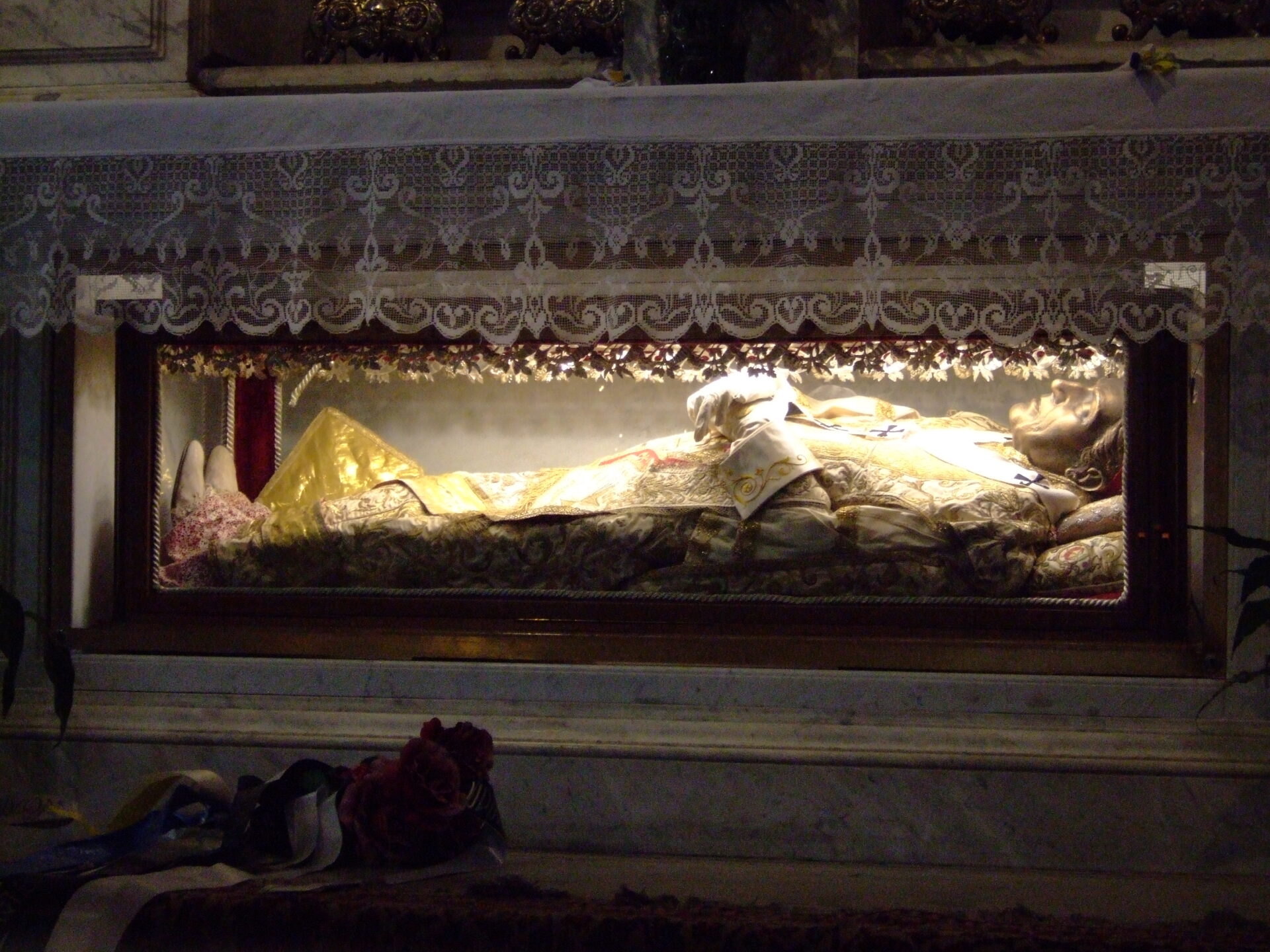
The Duomo Through the Ages
Walking through the Duomo, I was struck by its Baroque interior, which creates a somewhat dark but spiritually moving atmosphere. This style represents one of the major renovations the cathedral underwent after its initial construction.
The cathedral houses artwork depicting Saint Hermagoras, the first bishop of Aquileia, highlighting the important connection between Udine and the ancient patriarchate of Aquileia.
During the Renaissance period, the cathedral received artistic additions that reflect the cultural flowering of that era. These works now form part of the Museum of the Duomo, which showcases sacred art dating back to the Middle Ages.
The Duomo isn’t just a religious site; it’s a cultural landmark that illustrates the evolution of Friuli-Venezia Giulia’s artistic traditions. When I walk through its doors, I feel the weight of history in every stone and painting.
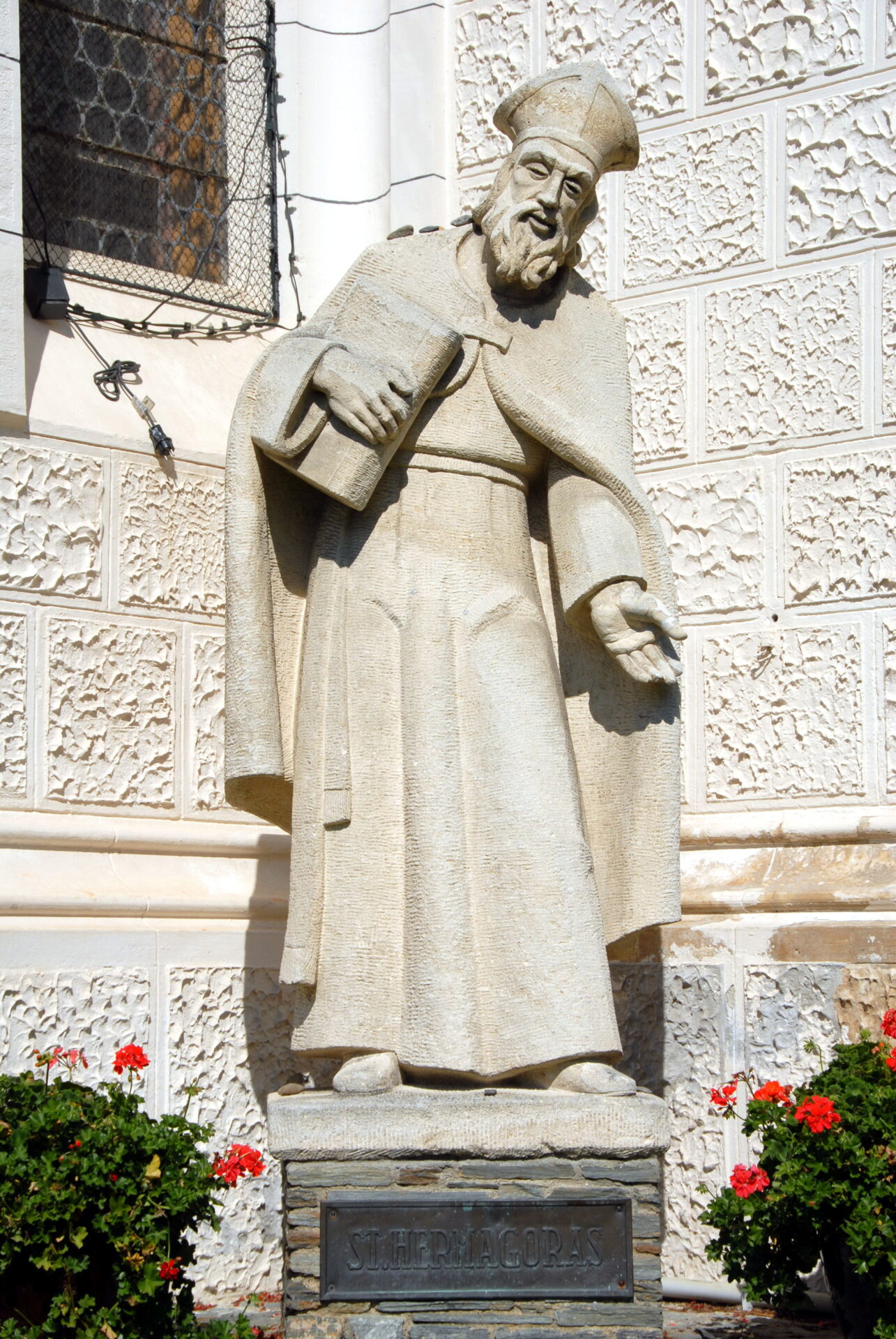
Masterpieces of the Duomo
The Duomo of Udine houses exceptional artistic treasures that span centuries of sacred art history. Within its walls, visitors can discover remarkable works from various periods that showcase the religious and cultural heritage of the region.
Exploring the Iconography
Walking through the Duomo, I’m always struck by the rich symbolism in the artwork surrounding me. The Chapel of the Holy Sacrament features masterpieces by Giambattista Tiepolo, whose distinctive style brings biblical narratives to life through dramatic composition and lighting.
The iconography throughout the cathedral tells stories of faith through visual elements that even non-religious visitors can appreciate. Many works employ chiaroscuro techniques – the bold contrast between light and dark – to create depth and emphasize the spiritual message.
In the Battistero, I found a stunning marble depiction of Noah’s Ark, an incredible piece that demonstrates the skilled craftsmanship of medieval artisans. The detailed carvings invite closer inspection to appreciate the narrative elements.
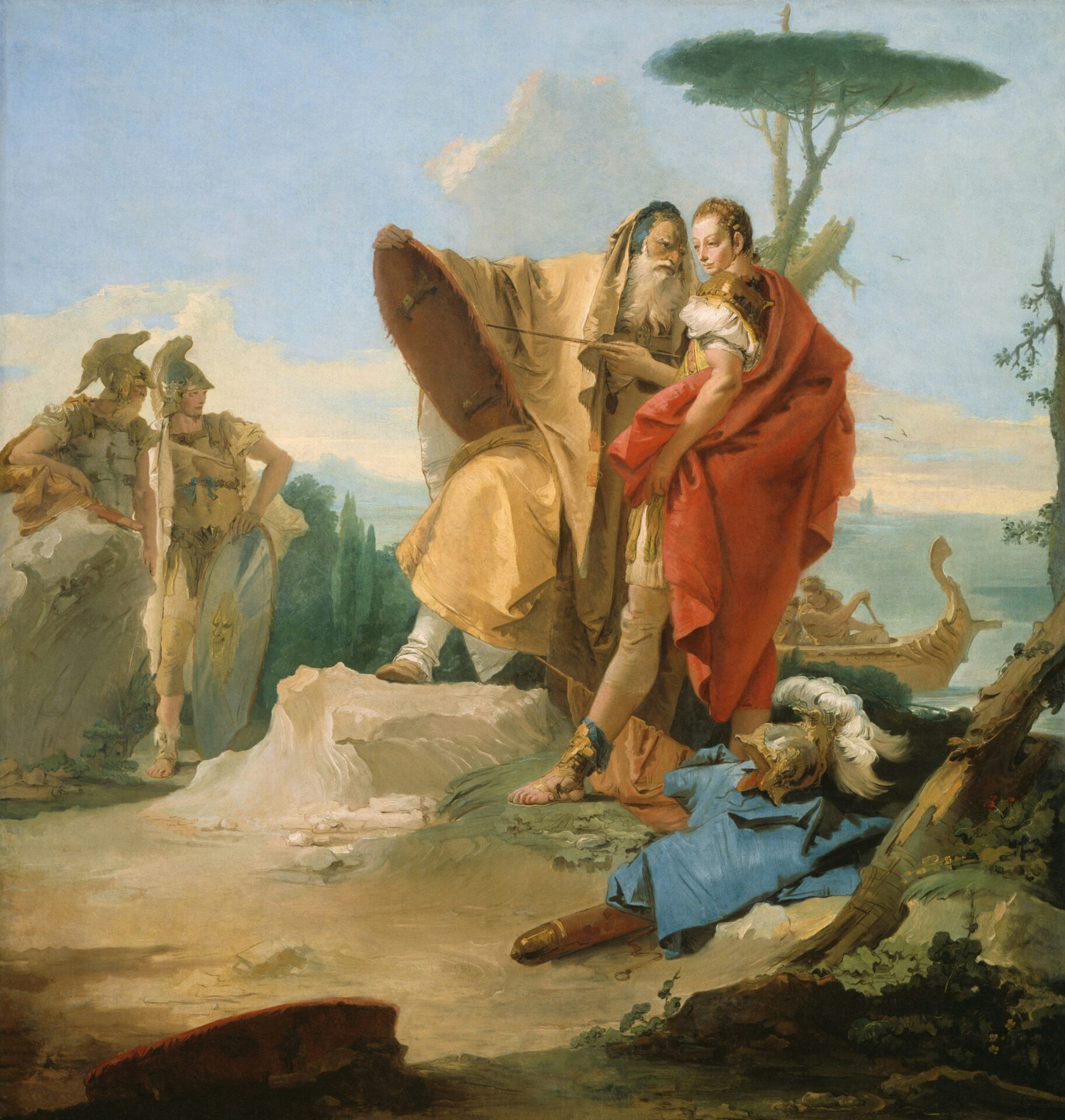
Significant Artworks and Their Interpretation
The Museum of the Duomo is dedicated to Blessed Patriarch Bertrand of Saint Geniès, who ruled Friuli in the 14th century. His influence shaped much of the art collection we see today.
On my last visit, I discovered works from different eras displayed throughout the museum’s heritage vaults. The collection includes precious 15th-century masterpieces that rival those found in more famous Italian cathedrals.
While not containing works by Raphael or Michelangelo, the Duomo’s art collection should not be overlooked. The local artists represented here created pieces that reflect the unique cultural identity of Udine and the Friuli region.
Art historians particularly value these works for their representation of regional artistic traditions that developed somewhat independently from the more famous Florentine and Roman schools.
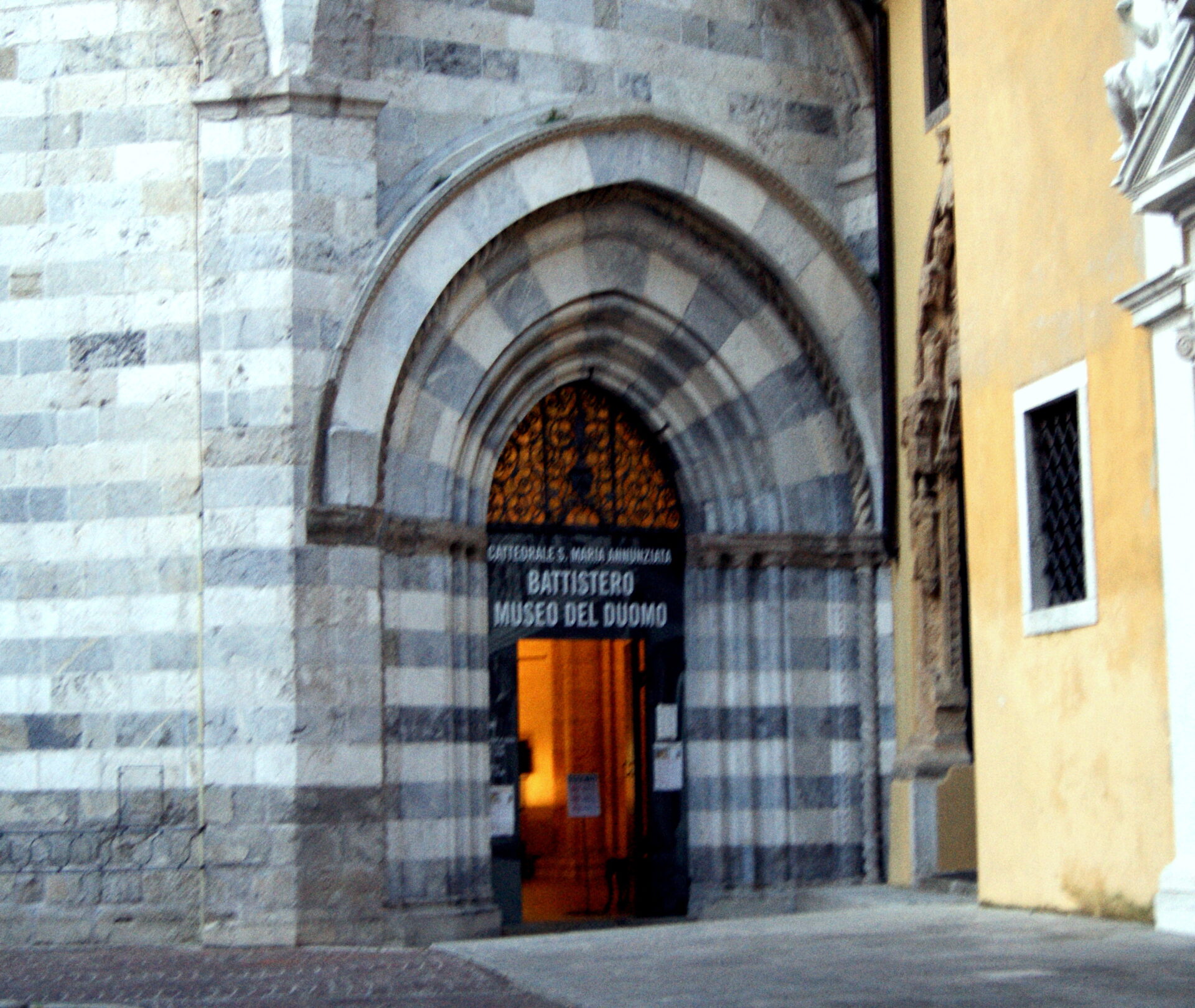
The Architectural Styles of the Duomo
The Udine Cathedral showcases a fascinating blend of architectural styles that evolved over centuries. Its structure combines earlier Gothic foundations with later Baroque enhancements, creating a visually stunning sacred space that tells the story of changing artistic tastes.
Gothic and Romanesque Influences
When I first entered Udine’s Duomo, I was immediately struck by the Gothic elements that form its architectural backbone. The cathedral’s structure reflects the medieval period’s love of height and light, with pointed arches drawing my eyes upward.
The exterior preserves some Romanesque features that remind me of the cathedral’s ancient origins. These include the solid stonework and rounded arches that contrast beautifully with the more delicate Gothic elements.
I noticed how the architects cleverly merged these two styles, using Romanesque techniques for structural support while incorporating Gothic features for aesthetic appeal. The stained glass windows are particularly impressive, filtering light through colored glass in the true Gothic tradition.
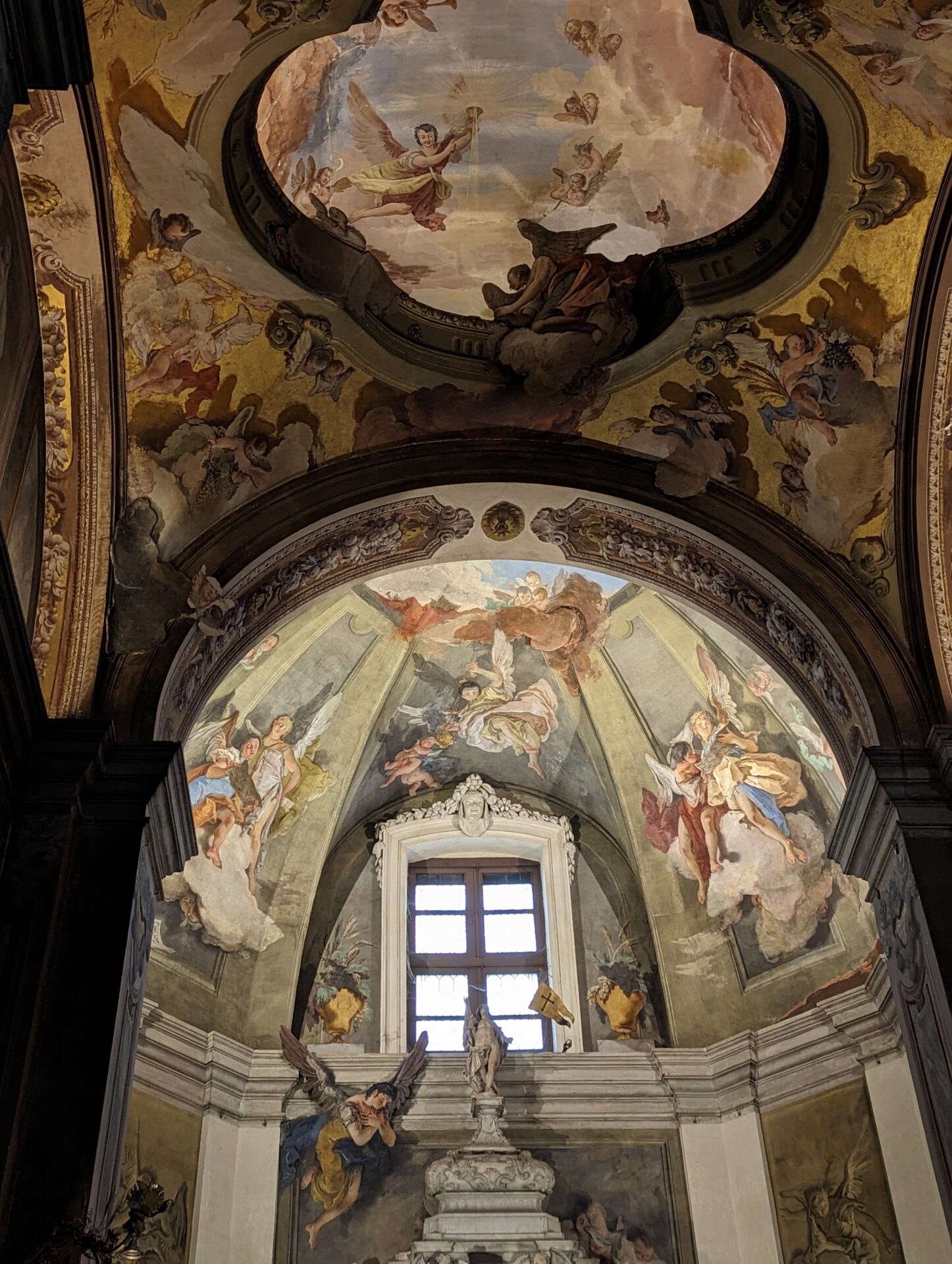
Baroque and Renaissance Revivals
The interior of Udine Cathedral took my breath away with its dominant Baroque styling. As I wandered through the main nave, I saw how the 18th-century renovations transformed the space with ornate decorations and dramatic contrasts of light and shadow.
The Manin family’s patronage was crucial to these Baroque additions. Their mausoleums, which I discovered preserved within the cathedral, stand as testament to their importance to the building’s development.
Renaissance influences appear in specific architectural details and decorative elements. I admired the balanced proportions and classical motifs that reflect Renaissance ideals of harmony and mathematical precision.
The dome, while not as famous as Brunelleschi’s masterpiece in Florence, shows similar engineering principles adapted to the local context. Its elegant curve creates a heavenly canopy above the altar space, drawing together the various architectural styles into a unified whole.
Sacred Spaces: The Duomo’s Baptistery and Altars
The Duomo of Udine houses sacred spaces that serve both ceremonial and spiritual functions. The baptistery and altars represent the heart of religious life in this cathedral, connecting visitors to centuries of faith traditions.
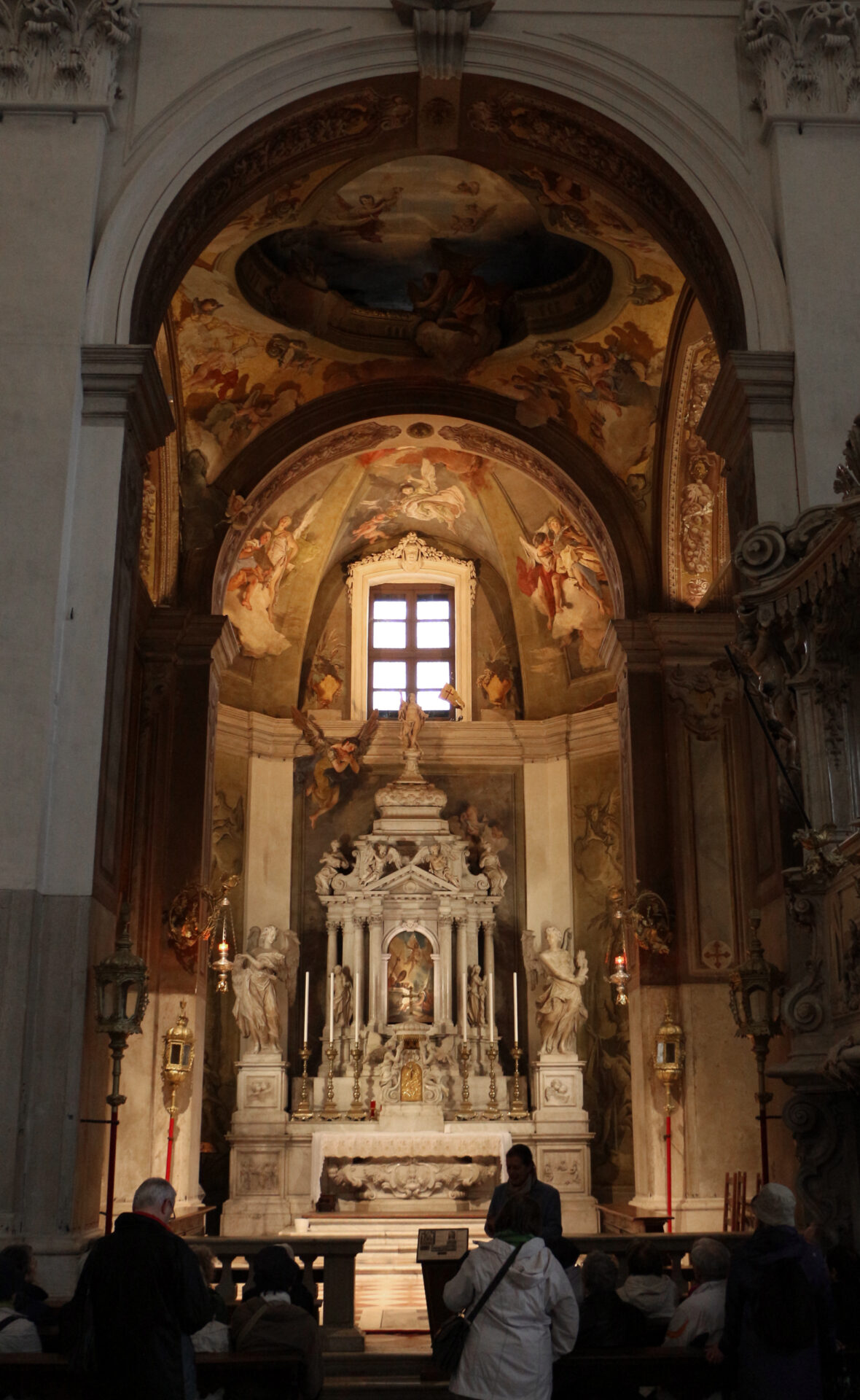
The Baptistery’s Role in Religious Rites
The baptistery in Udine’s Duomo reminds me of Florence’s famous Baptistery of San Giovanni in its solemn purpose. I was struck by how this octagonal space creates an intimate setting for one of Christianity’s most important sacraments.
Unlike larger baptisteries, Udine’s version features a modest stone font that dates back to the 14th century. The walls display frescoes depicting John the Baptist performing Christ’s baptism in the Jordan River.
When I visited on a quiet Tuesday morning, I watched as a family prepared for their child’s baptism. The priest explained how this space has welcomed new Christians for generations.
Light filters through small windows, creating a contemplative atmosphere perfect for spiritual reflection. The acoustics amplify even whispered prayers, connecting visitors to centuries of faithful who stood in this same spot.
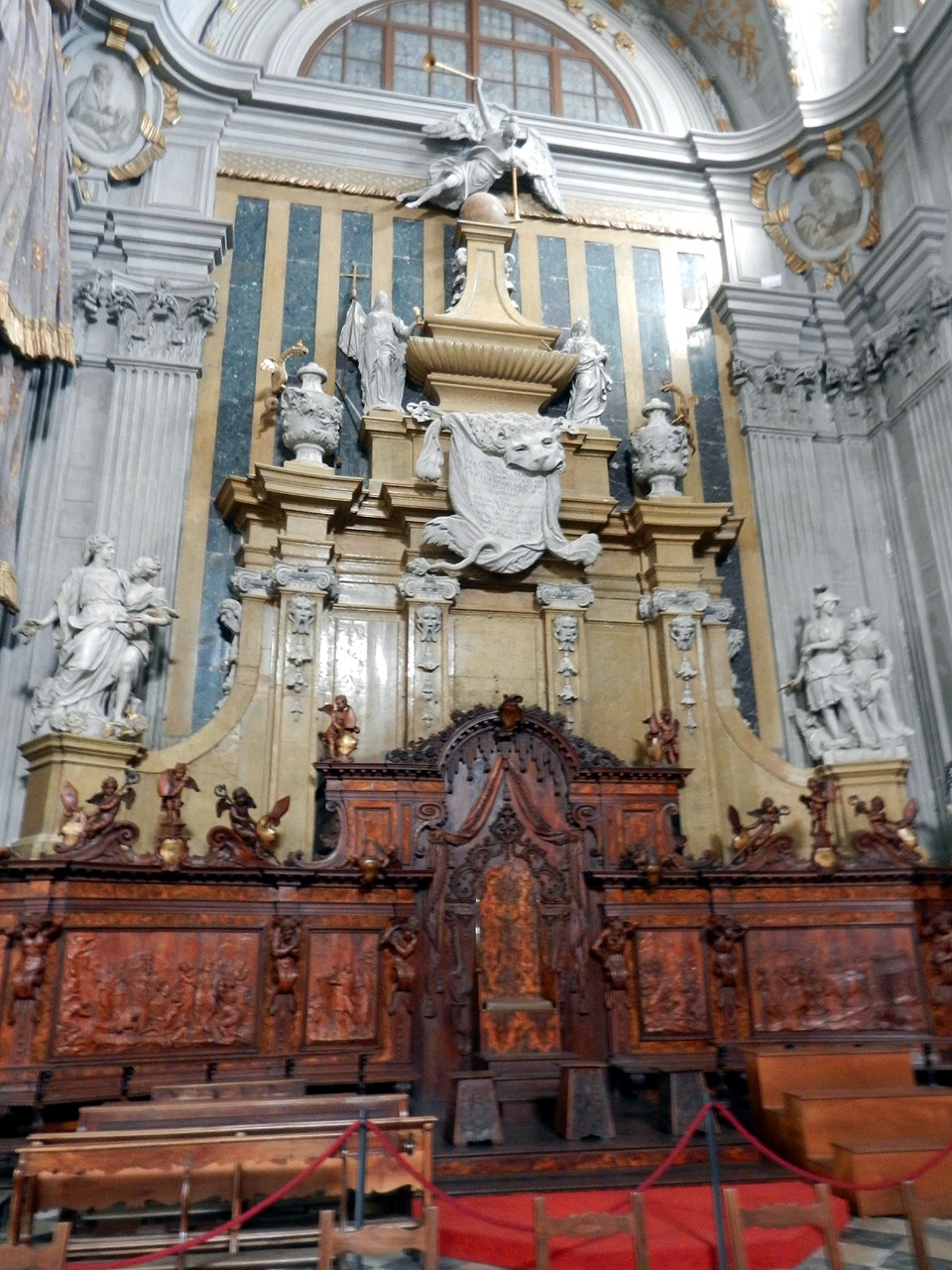
The Art of the Altar: Celebrating the Nativity and Resurrection
The main altar stands as the Duomo’s spiritual centerpiece. I was immediately drawn to its elaborate marble work and gold detailing that frames a stunning altarpiece.
The Nativity altar features a remarkable 16th-century triptych showing Christ’s birth with influences from the Venetian school. The craftsmanship reminds me of works I’ve seen in San Marco in Venice, though with distinctive local elements.
To the right, the Resurrection altar presents a more dramatic scene. Christ rises triumphantly while guards sleep below. The artist’s use of light creates a powerful spiritual message about darkness and rebirth.
During Easter celebrations, these altars become focal points for worshippers. Candles illuminate the carved details, bringing the biblical narratives to life in a way that still moves me each time I visit.
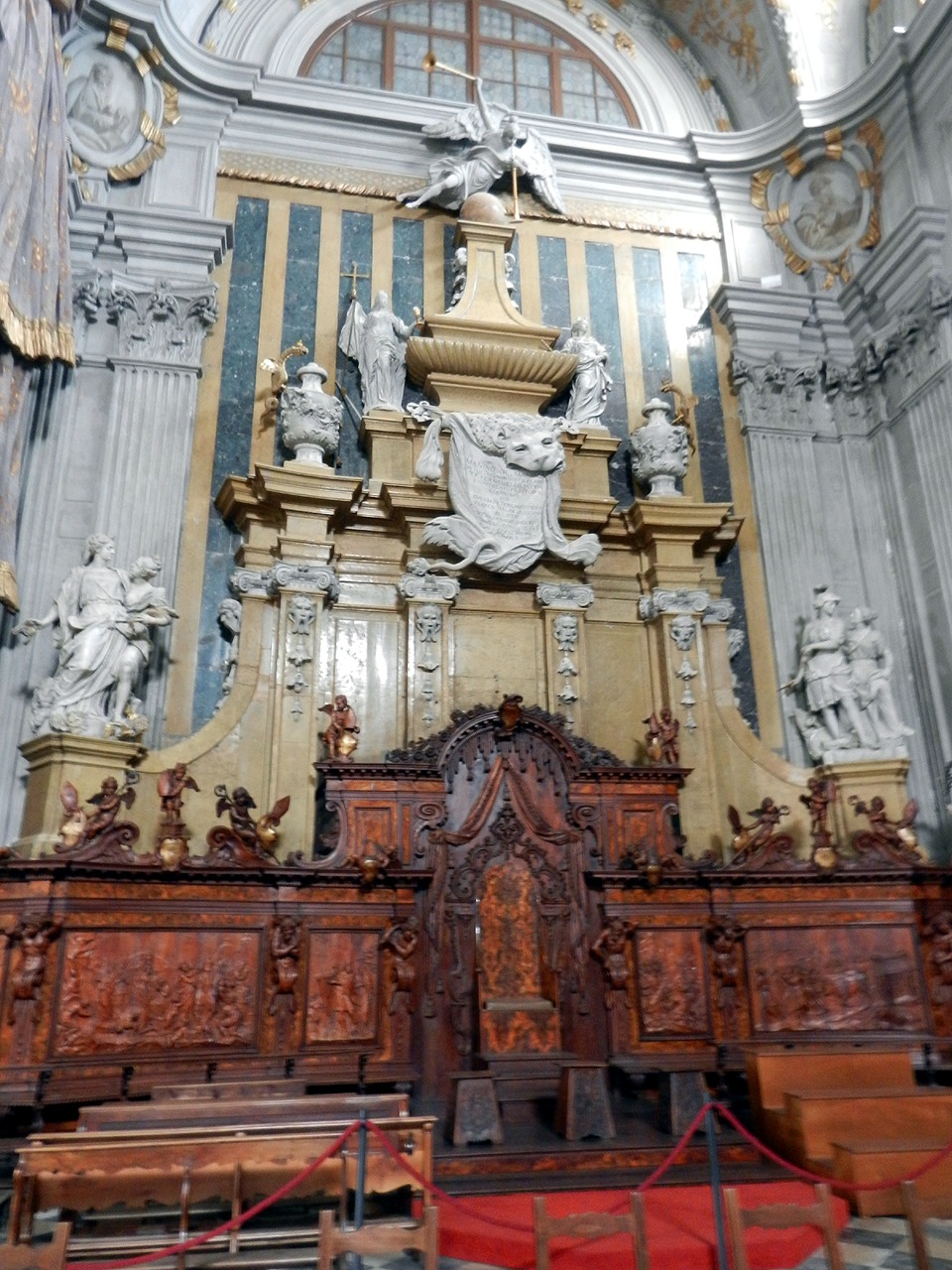
Beyond the Duomo: Udine’s Religious Architectural Heritage
While Udine’s Duomo stands as the centerpiece of the city’s religious landscape, the surrounding area boasts numerous architectural treasures that reflect centuries of cultural and spiritual development. These sacred spaces showcase the region’s unique position at the crossroads of Italian, Austrian, and Slavic influences.
Santa Maria Maggiore and Santa Croce
During my exploration of Udine, I was captivated by Santa Maria Maggiore’s elegant façade. This church dates back to the 13th century and features a stunning mix of Romanesque and Gothic elements. The interior houses remarkable frescoes depicting scenes from the life of the Virgin Mary.
Just a short walk away stands Santa Croce, a gem that many tourists overlook. I spent hours admiring its unique octagonal design and Byzantine influences. The church survived several earthquakes that rocked the Adriatic region over the centuries.
What impressed me most was the delicate stonework around the doorways, showing clear Venetian influence. Both churches offer a peaceful retreat from the bustling city center.
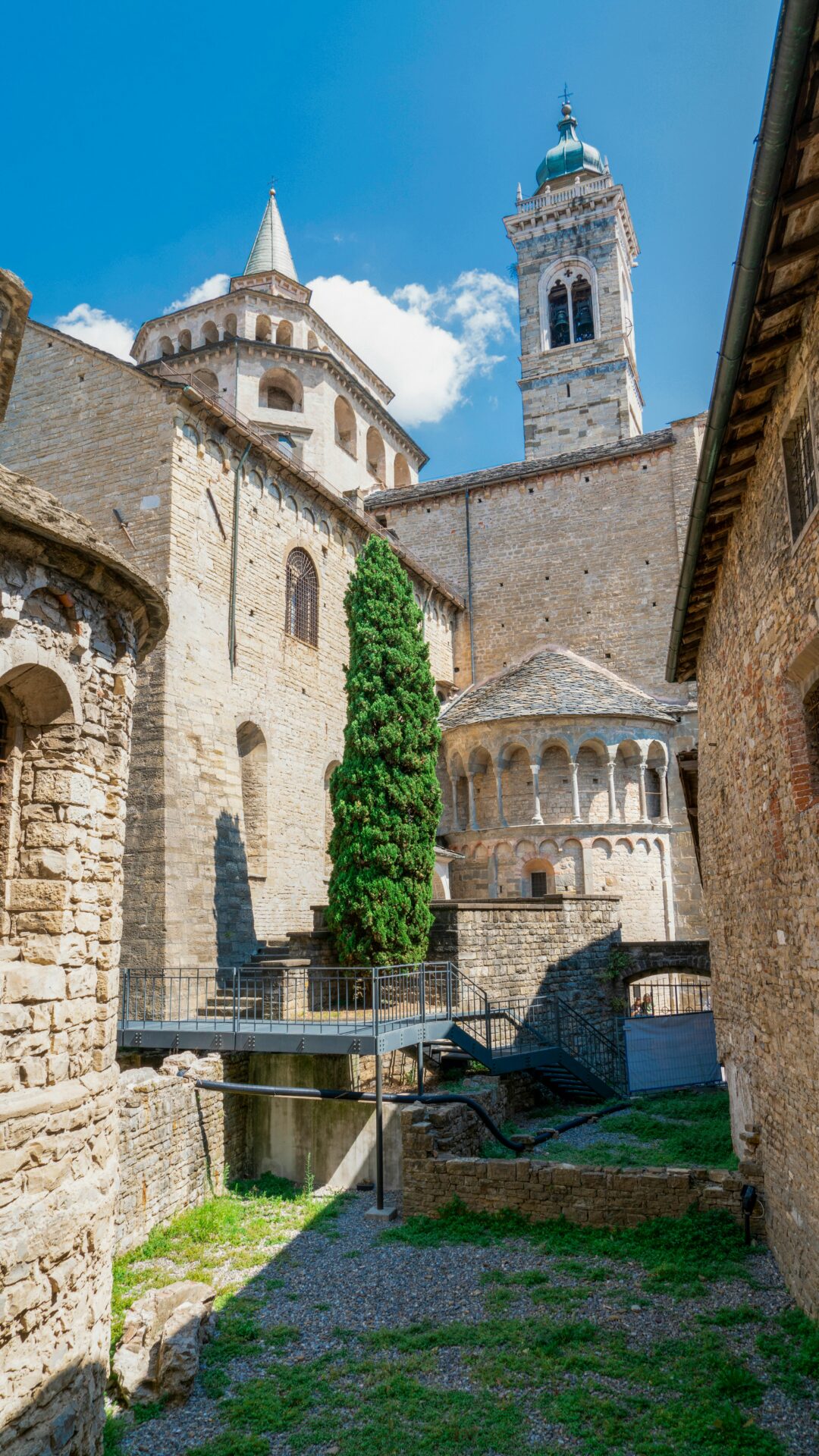
The Wonders of San Lorenzo and San Miniato al Monte
San Lorenzo represents the pinnacle of Renaissance architecture in Udine. Its perfect proportions remind me of Palladio’s masterpieces found elsewhere in northeastern Italy. The church’s bell tower provides stunning views across the city toward the distant Alps.
Inside, I discovered beautifully preserved Late Antiquity mosaics that demonstrate Udine’s importance as a religious center for centuries. The church houses a valuable collection of religious artifacts that survived numerous conflicts.
San Miniato al Monte sits on a hillside offering breathtaking panoramas. Though smaller than its Florentine namesake, it shares similar Romanesque characteristics. The church’s strategic location made it a pilgrimage site since medieval times. It’s simple stone exterior belies the ornate gold leaf decorations adorning the altar inside.
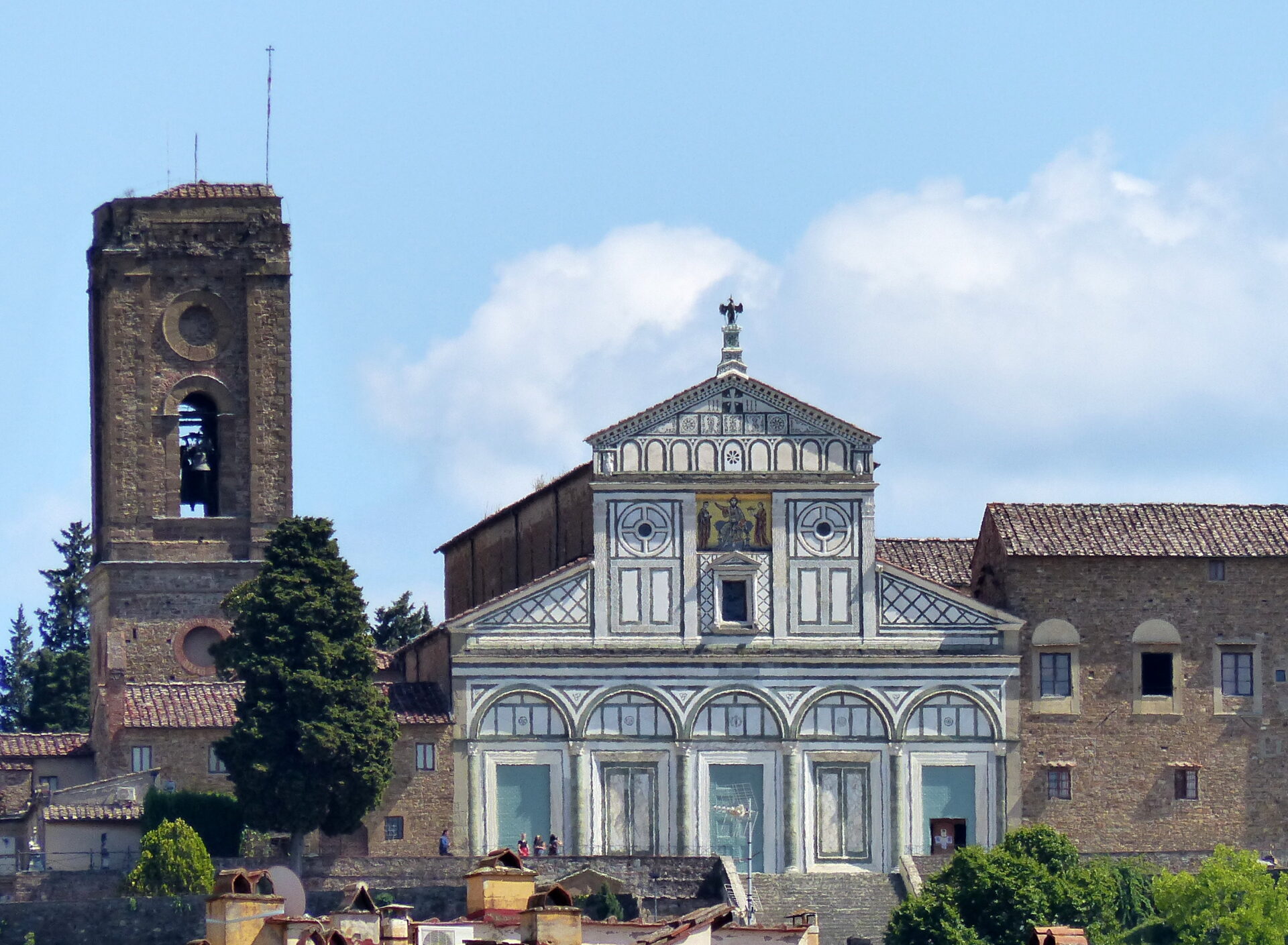
Frequently Asked Questions
Visitors to Udine’s magnificent Duomo often have questions about its rich history, artistic treasures, and spiritual significance. The cathedral holds centuries of stories within its walls and offers numerous experiences for those seeking beauty or contemplation.
When I explored the Duomo, I discovered several overlooked treasures that most visitors miss. Behind the main altar, there’s a small chapel with exquisite 15th-century wooden carvings depicting scenes from the life of Christ.
Don’t miss the hidden crypt, accessible through a discreet stairway near the left transept. It contains remarkable stone reliefs dating back to the early medieval period, showing the influence of Byzantine art in the region.
I recommend asking about the “Weeping Madonna” – a small painting tucked away in a side chapel that locals believe has miraculous properties. The caretakers can share fascinating stories about its history.
The magnificent frescoes in Udine’s Duomo tell stories spanning centuries. The most celebrated works come from the talented hands of Giambattista Tiepolo, who painted here during the mid-18th century.
Tiepolo’s masterpiece adorns the chapel dedicated to the Blessed Patriarch Bertrand of Saint Geniès, who ruled the patriarchal state of Friuli around 1350. His vivid biblical scenes showcase the Venetian influence that dominated the region’s artistic tradition.
Earlier frescoes in the side chapels were created by local artists from the Friulian school. Look for the distinctive stylistic differences between these works and Tiepolo’s more dynamic Baroque approach.
I’ve found that the Duomo offers several quiet corners perfect for spiritual reflection. The Chapel of the Blessed Sacrament provides a peaceful retreat away from tourist paths. It has soft lighting and comfortable wooden pews.
Daily mass creates an authentic opportunity to experience the cathedral as a living place of worship rather than just a monument. The acoustics during choir performances are truly transcendent, especially during evening services.
Early mornings offer the most serene atmosphere. I arrived just after opening at 7:30 and had almost the entire cathedral to myself. I watched as sunlight gradually illuminated the stained glass windows.
The Duomo showcases a fascinating mix of Gothic and Renaissance elements. Its foundation dates to the 13th century, but significant renovations occurred during the 15th and 18th centuries.
The bell tower reflects the Venetian influence on Udine, resembling a smaller version of St. Mark’s campanile. Inside, Gothic arches contrast with Renaissance chapels, illustrating how the cathedral evolved as the city grew in prominence.
I noticed that unlike many Italian cathedrals, Udine’s Duomo has a distinctive regional character. Local Friulian stone gives the exterior its warm golden hue, while architectural details show the cultural crossroads between Italian, Austrian, and Slavic influences.
The feast day of Blessed Patriarch Bertrand on June 6th brings the most elaborate celebrations. I witnessed a procession where his reliquary is carried through the city streets, accompanied by participants in medieval costumes.
Easter Holy Week ceremonies preserve ancient traditions unique to Friuli. The Thursday night procession of the Blessed Sacrament involves haunting chants that blend Latin liturgy with local Friulian musical elements.
During December, the Duomo hosts special Advent concerts featuring regional choirs. These performances incorporate local carols that you won’t hear elsewhere in Italy, reflecting Udine’s distinct cultural heritage.
The museum attached to the Duomo contains the remarkable tomb of Blessed Patriarch Bertrand. The intricate carvings tell the story of his life and martyrdom. His preserved vestments showcase medieval textile artistry at its finest.
I was captivated by the treasury’s collection of religious silverwork. Particularly, the 14th-century processional cross survived numerous wars and natural disasters. The craftsmanship reveals Udine’s historical importance as a center of metalwork.
Don’t overlook the ancient baptismal font near the entrance. Its octagonal shape symbolizes the eighth day of creation. The stone bears worn inscriptions in both Latin and early Friulian dialect.

